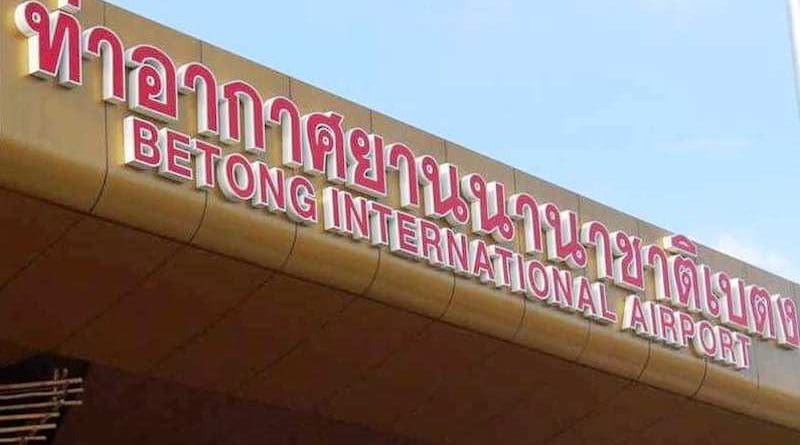Thailand: Why The Betong International Airport Is A White Elephant – OpEd
Flawed assumptions in public policy can lead to expensive mistakes
The construction of Betong International Airport began in 2017 after the project was pushed by both local identities and the former Thai prime minister Prayut Chan-o-cha. The mountainous enclave in the southern tip of Thailand with unique cuisine and multiculturalism was attracting 1.6 million visitors a year pre-Covid-19. Betong had shed its ‘honky tonk’ reputation and was attracting a much wider diversity of tourists. Hotel rooms are often fully booked out on weekends and public holidays.
The airport, 10 kms east of Betong town in Yarom District was completed mid-2021, where the first flight arrived on January 29, 2022. Then prime minister Prayut Chan-o-cha arrived on the first scheduled commercial flight on a Nok Air 86 seater Bombardier Dash 8 Q400 to attend the official opening of the 1.9 billion Baht airport, which featured giant bamboo outer walls around the terminal (Betong means large bamboo in Jawi the local language) on March 14, 2022.
The official opening brought hopes that the airport would establish air links between Betong-Bangkok, and eventually Betong-Kuala Lumpur and Penang and greatly enhance tourism in the town. However, scheduled flights by Nok Air were cancelled indefinitely just two days after they began.
Nok Air stated at the time that the new route to Bangkok wasn’t financially viable, even though the demand to seats was close to capacity. Due to the short concrete runway of 5,906 feet (1,800 metres) and its 30 metre width, only aircraft such as the ATR-32, Airbus A319, Boeing 737 could operate to and from the airport. This limited seats to 80-90 per flight. As the airport had no fuelling facilities, turboprop aircraft would have to refuel at a third airport for longer routes.
This has led to Betong International Airport becoming semi-abandoned with only skeleton security staff on location. The giant bamboo outer wall of the 7,000 square foot terminal is quickly weathering, and the runway itself is in danger of sinking in parts due to heavy rains during the wet season. The costs of maintenance are high and not being met presently.
The airport has been almost abandoned for almost two years. Not even general aviation is using it. There was talk of doing deals with tourism agents to create demand for Betong as a tourism destination, and allowing a private airline company to operate the airport. However, Betong doesn’t have the same attraction, as Kok Samui has for Bangkok Airways. Bangkok Airways just purchased a 15 percent stake in U-Tapau International Airport in Chonburi/Rayong with much better long term potential.
In February, prime minister Srettha Thavisin visited Betong International Airport, where there was talk of extending the runway from 1,800 to 2,500 metres. This would be very costly due to the immediate terrain around the airport to accommodate larger aircraft with 150-180 seat capacity. Moreover, it would be risky as demand for the extra capacity is far from certain.
By far the biggest issue is the perception of the danger of the Deep South insurgency situation. The media has been playing up the success of the peace talks brokered by Malaysia. However, the extraordinary outbreak of violence during Ramadan is a negative. The reality of the peace talks is that the terms of reference (TOR) of the talks has not been agreed to yet, and its far from certain whether Mara Patani, supposedly representing the insurgents has any real control on the ground.
For the perspective of public policy formation, the fallacy of Betong International Airport lies in the demographics of Betong’s 1.6 million annual visitors. The majority of visitors to Belong comprise of Thai’s living within the three most southern provinces, Patani, Yala, and Narathiwat. In a similar manner, visitors to Betong from Malaysia come from the northern states, only a short driving distance away. Thus, Betong International Airport as an entry point for existing visitor demographics is totally unsuitable. They will come by road.
This is a 1.9 billion baht mistake that shouldn’t happen through prudent feasibility studies. Perhaps the best option is to handover the airport to the Royal Thai Air Force to operate as a forward base.

